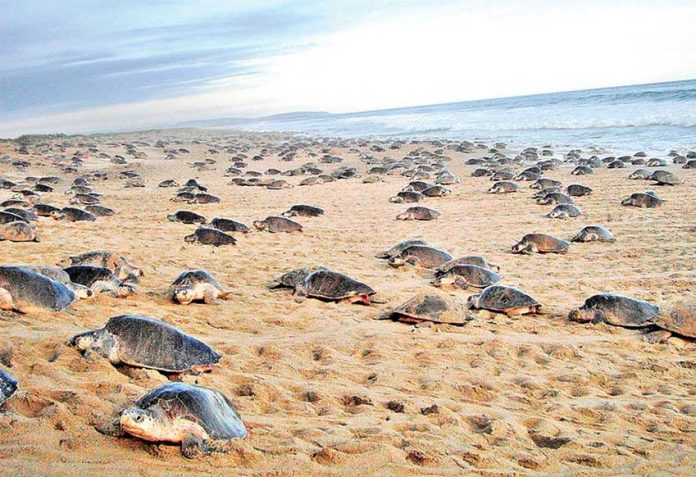The number of olive ridley sea turtles arriving on Oaxaca beaches continued to increase the last nesting season thanks to a ban on turtle hunting in place since 1990 and other conservation efforts aimed at protecting the species.
Laura Sarti Martínez, coordinator of the National Sea Turtle Program at the Natural Protected Areas Commission (Conanp), told the newspaper Milenio that more than 4.6 million turtles came ashore at the Playa Escobilla and Morro Ayuta sanctuaries during the 2017-2018 nesting season, which ended in February.
The two beaches are considered the most important in the world for the reproduction of the species known in Mexico as the tortuga golfina.
The number of arrivals last season represents a massive increase on the number of turtles nesting at the beaches in the 1980s before the hunting ban was enforced.
“The olive ridley turtle was hunted legally in the 70s, they were captured in quotas by certain fishing cooperatives in Michoacán, Guerrero, Oaxaca, Colima and Jalisco. In 1990, the ban was declared due to the decline of turtles nesting on the beaches of the Mexican Pacific. Currently the [Oaxaca] population is the biggest in the country. From 120,000 nests in the 80s to . . . four million is a clear trend,” Sarti said.
The number of hatchlings reaching the water has also increased exponentially, from 3.7 million in 2012 to 79.2 million last season.
But despite the turtle’s impressive recovery, the golfina is still considered in danger of extinction.
Valeria Towns, a Conanp director who coordinates conservation efforts, said that more needs to be done to raise awareness about the risks sea turtles face.
“. . . Yes, in recent years, we have managed to increase the number of turtles that are nesting, the population has increased but that doesn’t mean that risks have decreased and that their removal from the endangered species list could be considered,” she said.
One of those risks — fishing nets — last week caused the death of as many as 380 olive ridley turtles off the coast at Barra de Colotepec, a community near Puerto Escondido.
The Environmental Protection Agency (Profepa) said Wednesday that the nets that trapped the turtles belonged to coastal fisherman and not a tuna or shrimp boat as initially thought, while the coordinator of the Mexican Turtle Center in Mazunte alleges that the turtles were deliberately targeted.
Source: Milenio (sp)
